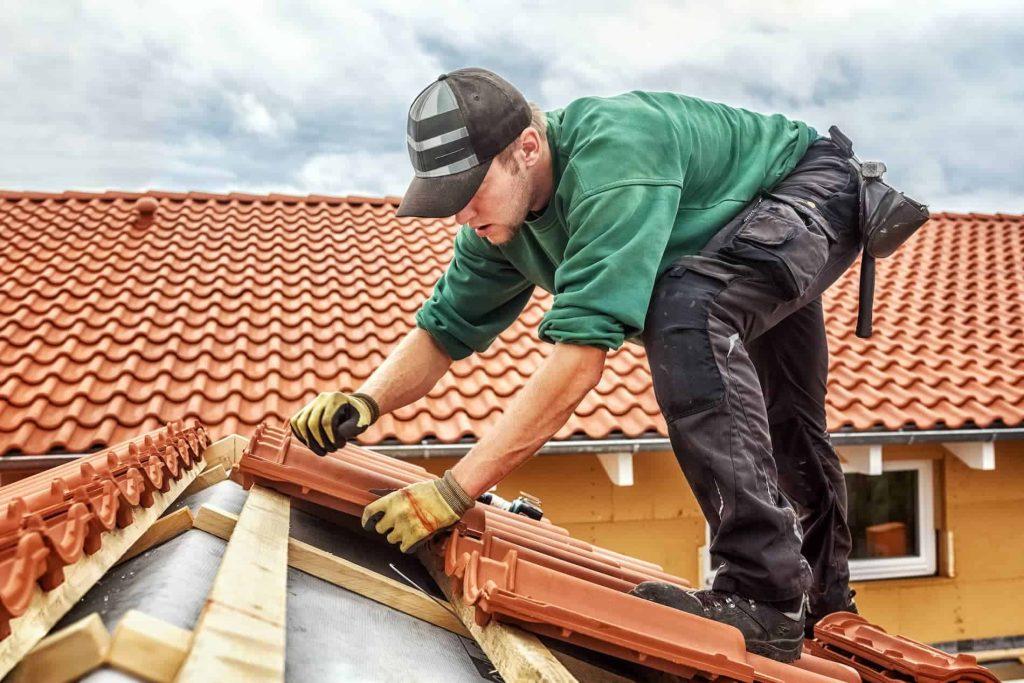Tile roofs are renowned for their durability and classic aesthetic appeal. However, like any roofing material, they don’t last forever. Over time, tile roofs may require replacement due to various factors such as wear and tear, weather damage, or structural issues. In this comprehensive guide, we’ll explore the key signs that indicate it’s time to replace your tile roof and the essential considerations to keep in mind during the replacement process.

Signs That It’s Time for a Tile Roof Replacement
Tile roofs are known for their longevity, often lasting 50 years or more with proper maintenance. However, there are several telltale signs that suggest it’s time for a replacement:
1. Damaged or Missing Tiles
One of the most obvious signs that your tile roof needs replacement is damaged or missing tiles. Cracked, chipped, or broken tiles can compromise the integrity of the roof, leading to leaks and further damage to the structure.
2. Water Leakage
If you notice water stains on your ceiling or interior walls, it’s a clear indication of roof leakage. This can be caused by damaged tiles, deteriorated underlayment, or worn-out flashing. Prompt action is necessary to prevent further interior damage.
3. Algae and Moss Growth
The growth of algae, moss, or other vegetation on your tile roof can not only be unsightly but also detrimental to the tiles themselves. It can trap moisture, leading to accelerated tile deterioration. Regular cleaning and maintenance can help, but severe cases may warrant a replacement.
4. Sagging Roof
A sagging or uneven tile roof may indicate structural issues. It could be a problem with the roof’s support system or decking. If left unaddressed, this can lead to more significant problems, and replacement may be necessary.
5. High Energy Bills
An old or deteriorated tile roof may no longer provide adequate insulation. If you notice a significant increase in your energy bills, it could be a sign that your roof is no longer effectively insulating your home. Replacement with modern, energy-efficient materials can help reduce energy costs.
6. Frequent Repairs
If you find yourself frequently repairing your tile roof, it may be more cost-effective in the long run to invest in a replacement. Repeated repairs can add up, and an old roof may have reached the end of its serviceable life.
Important Considerations for Tile Roof Replacement
Once you’ve identified the need for a tile roof replacement, here are some crucial considerations to keep in mind:
1. Roofing Material Selection
Choose the right roofing material for your replacement project. While you may opt for traditional clay or concrete tiles, there are also alternatives such as synthetic tiles that offer durability and lighter weight.
2. Hiring a Professional
Roof replacement is a complex job that should be handled by experienced roofing professionals. Look for licensed and insured roofing contractors with a track record of quality work.
3. Local Building Codes
Ensure that your replacement adheres to local building codes and regulations. Your roofing contractor should be familiar with these codes and obtain any necessary permits.
4. Budget and Financing
Consider your budget for the replacement project. Roof replacements can vary significantly in cost, depending on factors like materials, labor, and the size of your roof. Explore financing options if needed.
5. Roof Ventilation
Proper roof ventilation is essential for the longevity of your new roof. Discuss ventilation options with your contractor to ensure that your replacement includes adequate ventilation.
Conclusion
Replacing a tile roof is a significant investment, but it’s essential to maintain the integrity and safety of your home. By recognizing the signs of wear and knowing the critical considerations for replacement, you can make an informed decision that ensures the protection and longevity of your property. Consult with a professional roofing contractor to assess your specific situation and embark on a successful tile roof replacement project.



Leave a Reply